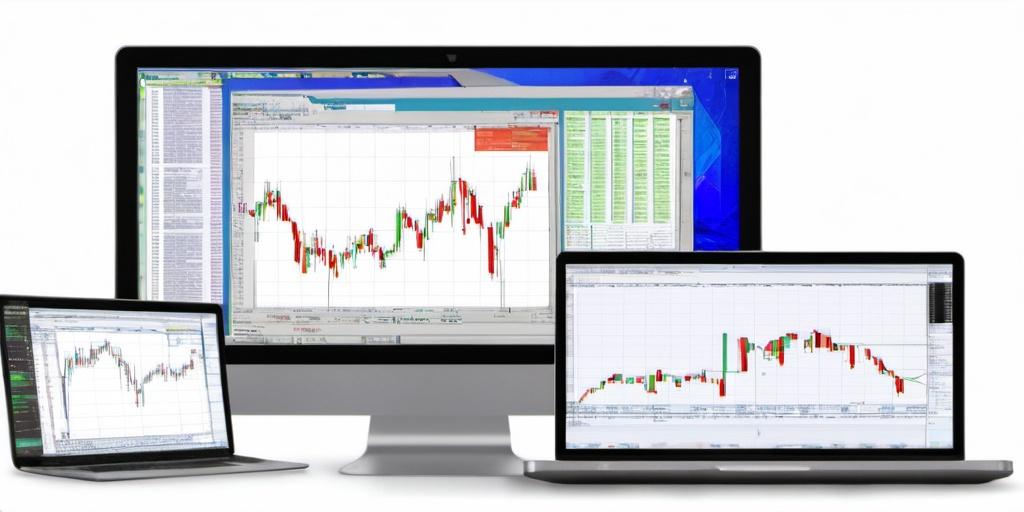Tradestation EasyLanguage Autotrading
YukonSoft >> Tradestation EasyLanguage AutotradingLearn more about Tradestation EasyLanguage Autotrading

Introduction to TradeStation EasyLanguage Autotrading
So, you think you’re ready to try something different with your trading? Maybe you’re tired of staring at charts until your eyes glaze over or you just want a way to make money while you’re sipping your morning coffee. Enter TradeStation’s EasyLanguage Autotrading. It’s like having a trusty sidekick who never sleeps and doesn’t complain when you make it do all the heavy lifting.
What is EasyLanguage?
Imagine programming your own trading strategy using a language that’s about as easy as it can get—hence the name, EasyLanguage. Born in the ’80s, this language was built specifically for traders, not programmers. So, you won’t need to have the coding chops of a Silicon Valley whiz kid.
Now, don’t expect to just mumble a few lines of code and become a millionaire overnight. But it does let you create, test, and automate your trading strategies, all from the comfort of TradeStation’s platform.
Getting Started with Autotrading
Before jumping into autotrading, you’ve got to set up your TradeStation account if you haven’t already. This process is pretty straightforward, but don’t skip the fine print—no one likes surprises, especially when money’s involved. Once in, familiarize yourself with the EasyLanguage interface. It’s like learning to ride a bike, a bit wobbly at first, but you’ll get the hang of it.
The Structure of EasyLanguage
The beauty of EasyLanguage lies in its simplicity. Think of it like writing sentences where each line tells your computer what to do. Here’s a quick breakdown:
– **Variables**: These are your bread and butter, storing data that your strategy uses. Whether it’s prices, time periods, or any other metric, variables keep your strategy running smoothly.
– **Conditions and Orders**: You’ll use these to decide when to buy or sell. Conditions are your “if this, then that” statements—basic logic that even a teenager could master.
– **Functions**: To keep your code tidy, you can create functions for tasks you use often. Think of them as little helpers that do the grunt work.
Testing Before You Leap
Before you set your strategy loose on the open market, give it a trial run. It’s like taking a new car for a spin before you buy it. TradeStation offers robust backtesting tools, allowing you to apply your strategy to historical data to see how it would have performed. Don’t be discouraged by initial failures—it’s like learning to cook without burning the house down.
Automation in Action
So, you’ve honed your strategy and are ready to let it run. With autotrading, you can set your strategy to execute trades without any manual intervention. This is the “set it and forget it” moment that makes you feel like a trading wizard.
Risk Management
With great power comes great responsibility—managing your risk is crucial. It might be tempting to let your strategy run wild, but remember, autotrading doesn’t eliminate risk. Use stop-loss orders and other risk management tools to keep your finances in check.
Common Pitfalls
Even with a trusty sidekick, things can go awry. Here’s a quick look at some common pitfalls:
– **Over-Optimization**: Tuning your strategy to past data can lead to perfection in hindsight but disaster in real-time.
– **Ignoring Market Changes**: Like fashion, markets change. A strategy that works today might not work tomorrow.
– **Neglecting Risk Management**: It bears repeating—don’t let your autopilot trading get out of hand.
Personal Experiences and Anecdotes
You know those stories where someone says, “This one time, my autotrading strategy…” Well, they can be entertaining and educational. Many traders have stories of both wild successes and spectacular failures. One trader, for instance, left their strategy running while on vacation, only to come back richer—while another came back to an empty account.
The Learning Curve
It might take a bit of time to get the hang of everything. But remember, Rome wasn’t built in a day, and neither is a profitable trading strategy. Through trial, error, and possibly a couple of mishaps, you’ll learn what works for you and your trading style.
Conclusion
TradeStation EasyLanguage Autotrading offers a blend of flexibility, convenience, and speed, making it a popular choice among budding and seasoned traders alike. Just keep in mind that while it can automate your trading, it can’t automate success. Always keep an eye on the market and be ready to tweak your strategies as needed. With the right approach and mindset, you might just find yourself wondering why you didn’t start autotrading sooner.